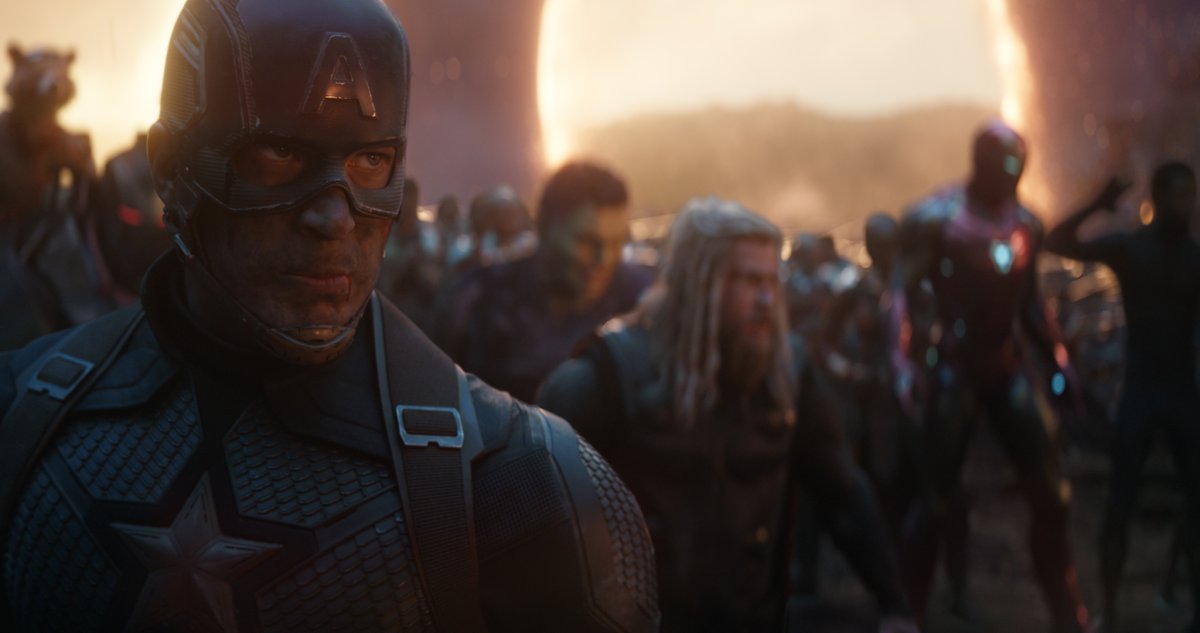The screenwriting duo behind Captain America: The Winter Soldier, Captain America: Civil War and Avengers: Infinity War described the complex character arcs fulfilled in their climactic entry, Avengers: Endgame to Vanity Fair, revealing in the process the omnipresence of financial considerations informing storytelling in the Marvel Cinematic Universe.
Screenwriters Christopher Markus and Stephen McFeely have worked with directing duo Anthony and Joe Russo across four Marvel Cinematic Universe films, including those most consequential to the decade-long narrative concluded in Avengers: Endgame. Particularly involved was the story planning for the intricately connected Infinity War and Endgame, originally conceived as Part 1 and Part 2 of a single saga.
The two-part story of Thanos' triumph and eventual defeat at the hands of a reunified Avengers was primarily written in a conference room at Marvel Studios, located on the Walt Disney Studios lot in Burbank, California. The entire Marvel universe sprawled across three walls: one for Infinity War, one for Endgame and the third with "baseball cards of all the Marvel characters." On each one was a picture of a character and a rating between one and five dollar signs, indicating how much the corresponding cast member would cost to put on screen.
So consider this an exit interview for #AvengersEndgame
— Anthony Breznican (@Breznican) November 20, 2019
If you love it 3000 — and have seen it almost as many times — I hope you'll still discover surprising things here.https://t.co/UpJodTJErj
While some elements of the Infinity War to Endgame saga had been conceived as far back as 2015—McFeely and Markus wrote both Tony Stark's death and Captain America reuniting for a dance with Peggy Carter on 3x5 notecards shortly after principal photography wrapped on Civil War—a large part of the writing process was finding fulfilling character interactions and stories by juggling between a staggering ensemble of 65 characters, introduced over the course of 21 movies (prior to Endgame). The baseball cards were an essential part of this winnowing and shuffling.

"Some intern in-house makes them," McFeely told Vanity Fair. "They have a magnet on the back. They get dog-eared and bent and stuff. [Each one] says if we have them or not for this movie. And there was a little rating. We didn't know much [money] each actor made, but it had either one dollar sign or up to five dollar signs."
But while the omnipresent financial impact of every creative choice was always visually evident, McFeely and Markus described it as a secondary concern.
"It was sort of just a guideline," McFeely said.
"They would allow us to do anything in anybody's contract," Markus added. "We'd get to renegotiate it as needed, but it was a fascinating glimpse into the other side."
Their overriding ambition remained, providing a satisfying end to a narrative built over more than a decade. "It needs an end or it loses meaning," Markus said. "The end is what cements the thing, to actually sew it together and bring it to a crescendo."
Markus and McFeely also said Marvel never insisted on a creative change based on the number of expensive cast members in a scene.
"No, it was, 'You better damn well have a good story for us,'" Markus said, when asked if Marvel ever balked at "too many dollar signs" in a scene.
"You actually try not to leave the five-dollar-signs on the sidelines," McFeely said.
While the care that went into Avengers: Infinity War and Endgame is evident in how McFeely and Markus talk about the writing process, the duo also implicitly confirm the essence of Director Martin Scorsese's structural critique of how modern franchise movies are produced, which he described in a November New York Times editorial.
In the editorial, Scorsese called modern franchise movies, "market-researched, audience-tested, vetted, modified, revetted and remodified until they're ready for consumption," even if they are made by "people of considerable talent and artistry."
As a consequence, Scorsese said Marvel movies "are sequels in name but they are remakes in spirit," adding that "everything in them is officially sanctioned because it can't really be any other way."
Scorsese distinguished between cinema, which he described as the "unifying vision of an individual artist," and Marvel movies, a distinction underlined by the years of conference room reconfigurations, always with dollar signs plainly in view.
"Whether you you like all of the 24 movies or not, the capital that Marvel built up allowed them to do things like make a movie starring a raccoon and tree, right?" McFeely said, when asked whether Marvel movies take enough narrative risks. "You would've already had Iron Man 4 if it was any other studio. But they decided, 'No, we're going to take chances on all these other things.'"
Uncommon Knowledge
Newsweek is committed to challenging conventional wisdom and finding connections in the search for common ground.
Newsweek is committed to challenging conventional wisdom and finding connections in the search for common ground.





